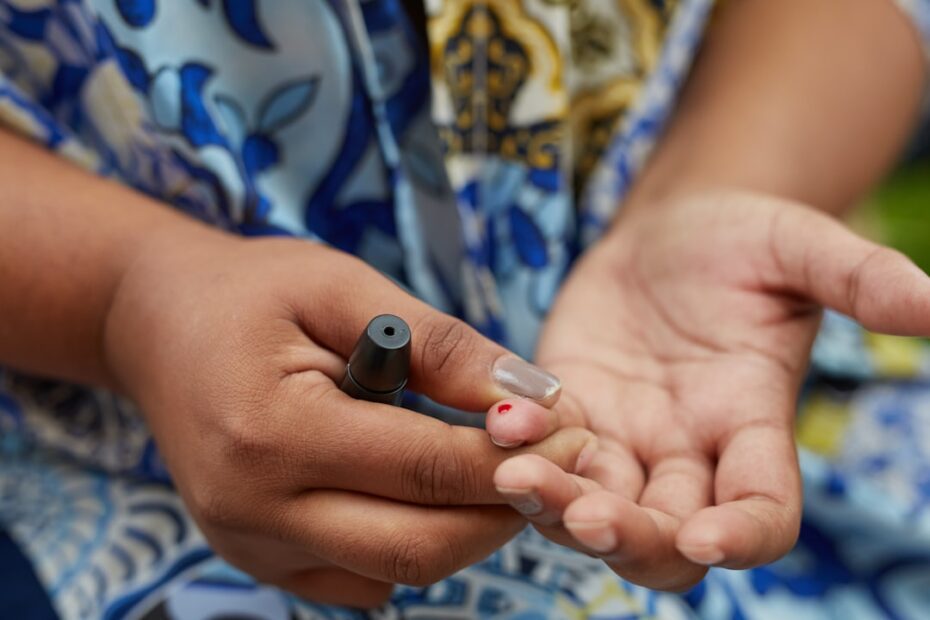High blood pressure, or hypertension, is a prevalent medical condition that affects millions of people globally. It is often called a “silent killer” because it typically presents no symptoms until significant damage has occurred. Hypertension is a major risk factor for cardiovascular diseases, including heart disease and stroke, as well as kidney failure.
Blood pressure is determined by two factors: the amount of blood pumped by the heart and the resistance to blood flow in the arteries. When this balance is disrupted, it can result in elevated blood pressure levels, which can have serious health consequences if left untreated. Fortunately, hypertension can often be managed effectively through lifestyle modifications.
While medication may be necessary for some individuals, many can achieve significant improvements through natural means. These strategies include dietary changes, regular exercise, stress management techniques, and weight control. Adopting a holistic approach to managing blood pressure can lead to long-term health benefits and improved overall well-being.
By understanding the mechanisms of blood pressure regulation and implementing appropriate lifestyle changes, individuals can take proactive steps toward achieving optimal cardiovascular health.
Key Takeaways
- Lowering blood pressure is important for overall health and reducing the risk of heart disease and stroke.
- Lifestyle changes, including diet, exercise, stress management, and weight management, play a crucial role in managing blood pressure.
- Dietary changes such as reducing sodium intake, increasing potassium-rich foods, and following a heart-healthy diet can help lower blood pressure.
- Regular physical activity, including aerobic and strength training exercises, can help lower blood pressure and improve overall cardiovascular health.
- Stress management techniques such as meditation, deep breathing, and yoga can help reduce stress and lower blood pressure.
Importance of Lifestyle Changes in Managing Blood Pressure
The significance of lifestyle changes in managing blood pressure cannot be overstated. While pharmacological interventions can be effective in controlling hypertension, they often come with side effects and may not address the underlying causes of the condition. In contrast, lifestyle modifications offer a more comprehensive approach that not only helps lower blood pressure but also promotes overall health and vitality.
By making conscious choices regarding diet, physical activity, and stress management, individuals can empower themselves to take charge of their health and reduce their reliance on medications. Moreover, the impact of lifestyle changes extends beyond just blood pressure management. Engaging in regular physical activity, for instance, not only helps to lower blood pressure but also improves cardiovascular fitness, enhances mood, and boosts energy levels.
Similarly, adopting a heart-healthy diet rich in fruits, vegetables, whole grains, and lean proteins can lead to weight loss and improved metabolic health. These interconnected benefits highlight the importance of viewing lifestyle changes as a holistic strategy rather than isolated efforts. By embracing a healthier lifestyle, individuals can cultivate resilience against hypertension and its associated risks while fostering a greater sense of well-being.
Dietary Changes to Lower Blood Pressure

Diet plays a pivotal role in managing blood pressure levels, with certain foods having the power to either elevate or lower these numbers significantly. The Dietary Approaches to Stop Hypertension (DASH) diet is one of the most well-researched dietary patterns designed specifically for this purpose. It emphasizes the consumption of fruits, vegetables, whole grains, lean proteins, and low-fat dairy while minimizing saturated fats, cholesterol, and sodium intake.
By focusing on nutrient-dense foods that are rich in potassium, magnesium, and fiber, individuals can create a dietary environment that supports healthy blood pressure levels. Reducing sodium intake is particularly crucial for those looking to lower their blood pressure. High sodium consumption has been linked to increased blood volume and arterial stiffness, both of which contribute to elevated blood pressure readings.
The American Heart Association recommends limiting sodium intake to no more than 2,300 milligrams per day, with an ideal target of 1,500 milligrams for those with hypertension. This can be achieved by avoiding processed foods, which often contain hidden salts, and opting for fresh ingredients whenever possible. Additionally, incorporating potassium-rich foods such as bananas, sweet potatoes, and spinach can help counteract the effects of sodium and promote better blood pressure regulation.
Exercise and Physical Activity for Blood Pressure Management
| Exercise Type | Frequency | Duration | Intensity |
|---|---|---|---|
| Aerobic Exercise | 3-5 times per week | 30-60 minutes | Moderate to vigorous |
| Strength Training | 2-3 times per week | 20-30 minutes | High intensity |
| Flexibility Exercises | 2-3 times per week | 10-15 minutes | Gentle to moderate |
Regular physical activity is another cornerstone of effective blood pressure management. Engaging in aerobic exercises such as walking, jogging, cycling, or swimming can lead to significant reductions in blood pressure levels over time. The American Heart Association recommends at least 150 minutes of moderate-intensity aerobic exercise per week for adults.
This level of activity not only helps to lower blood pressure but also strengthens the heart muscle, improves circulation, and enhances overall cardiovascular health. Furthermore, exercise has been shown to reduce stress levels and improve mood through the release of endorphins, creating a positive feedback loop that further supports blood pressure control. In addition to aerobic exercise, incorporating strength training into one’s routine can also be beneficial for managing hypertension.
Resistance training helps build muscle mass and improve metabolic function, which can contribute to better blood pressure regulation. Activities such as weight lifting or bodyweight exercises should be performed at least two days a week for optimal results. It’s important to note that any increase in physical activity should be approached gradually and tailored to individual fitness levels.
Consulting with a healthcare provider or fitness professional can help create a safe and effective exercise plan that aligns with personal health goals.
Stress Management and its Impact on Blood Pressure
Stress is an often-overlooked factor that can significantly impact blood pressure levels. When faced with stressors—whether they are physical, emotional, or environmental—the body responds by releasing hormones such as adrenaline and cortisol. These hormones prepare the body for a “fight or flight” response by increasing heart rate and constricting blood vessels, which can lead to temporary spikes in blood pressure.
Chronic stress can perpetuate this cycle, resulting in sustained high blood pressure over time. Therefore, effective stress management techniques are essential for anyone looking to maintain healthy blood pressure levels. There are numerous strategies for managing stress that can be easily integrated into daily life.
Mindfulness practices such as meditation and deep breathing exercises have been shown to reduce stress levels and promote relaxation. Engaging in hobbies or activities that bring joy—such as gardening, painting, or reading—can also serve as effective outlets for stress relief. Additionally, maintaining strong social connections with friends and family provides emotional support that can buffer against stressors.
By prioritizing mental well-being and incorporating stress-reducing practices into daily routines, individuals can create a more balanced lifestyle that supports healthy blood pressure management.
Importance of Weight Management in Lowering Blood Pressure

Weight management is a critical component of lowering blood pressure and improving overall health outcomes. Excess body weight places additional strain on the heart and increases the risk of developing hypertension due to factors such as increased blood volume and arterial stiffness. Research has consistently shown that even modest weight loss—around 5-10% of body weight—can lead to significant reductions in blood pressure levels for those who are overweight or obese.
This underscores the importance of adopting sustainable weight management strategies that prioritize long-term health rather than quick fixes. Achieving and maintaining a healthy weight involves a combination of dietary changes and regular physical activity. Creating a calorie deficit through mindful eating—focusing on portion control and nutrient-dense foods—can facilitate weight loss while still providing essential nutrients for overall health.
Additionally, incorporating regular exercise into one’s routine not only aids in weight loss but also helps build muscle mass and improve metabolic function. Setting realistic goals and tracking progress can enhance motivation and accountability throughout the weight management journey. Ultimately, by prioritizing weight control as part of a comprehensive approach to lowering blood pressure, individuals can significantly improve their cardiovascular health.
Other Lifestyle Changes for Lowering Blood Pressure
Beyond diet, exercise, stress management, and weight control, there are several other lifestyle changes that can contribute to lowering blood pressure effectively. One such change is reducing alcohol consumption; excessive drinking has been linked to elevated blood pressure levels. The American Heart Association recommends limiting alcohol intake to no more than one drink per day for women and two drinks per day for men.
By moderating alcohol consumption or abstaining altogether, individuals can support their cardiovascular health while also reducing their risk of hypertension-related complications. Another important factor is ensuring adequate sleep quality and duration. Poor sleep patterns have been associated with an increased risk of developing high blood pressure due to hormonal imbalances and increased stress responses during waking hours.
Prioritizing good sleep hygiene—such as maintaining a consistent sleep schedule, creating a relaxing bedtime routine, and minimizing screen time before bed—can enhance sleep quality significantly. Additionally, quitting smoking is crucial; tobacco use has been shown to damage blood vessels and elevate blood pressure levels over time. By addressing these additional lifestyle factors alongside diet and exercise, individuals can create a comprehensive strategy for effectively managing their blood pressure and promoting long-term health benefits.
In conclusion, lowering blood pressure is an achievable goal that requires a multifaceted approach centered around lifestyle changes. By understanding the importance of diet, exercise, stress management, weight control, and other healthy habits, individuals can take proactive steps toward improving their cardiovascular health. The journey toward better blood pressure management may require dedication and persistence; however, the rewards—a healthier heart and enhanced quality of life—are well worth the effort.
FAQs
What is blood pressure?
Blood pressure is the force of blood against the walls of the arteries as the heart pumps it around the body. It is measured in millimeters of mercury (mmHg) and is recorded as two numbers – systolic pressure (when the heart beats) over diastolic pressure (when the heart is at rest).
What is considered high blood pressure?
High blood pressure, also known as hypertension, is when the force of blood against the artery walls is consistently too high. A normal blood pressure reading is typically around 120/80 mmHg. High blood pressure is generally considered to be 130/80 mmHg or higher.
What lifestyle changes can help lower blood pressure?
Lifestyle changes that can help lower blood pressure include maintaining a healthy weight, engaging in regular physical activity, reducing sodium intake, limiting alcohol consumption, quitting smoking, managing stress, and following a heart-healthy diet such as the DASH (Dietary Approaches to Stop Hypertension) diet.
How does maintaining a healthy weight help lower blood pressure?
Being overweight or obese can increase the risk of high blood pressure. By losing weight through a combination of healthy eating and regular physical activity, individuals can lower their blood pressure and reduce their risk of developing hypertension.
How does physical activity help lower blood pressure?
Regular physical activity can help lower blood pressure by strengthening the heart, improving blood flow, and reducing the workload on the heart. It can also help individuals maintain a healthy weight and reduce stress, both of which are important factors in managing blood pressure.
How does reducing sodium intake help lower blood pressure?
Excess sodium in the diet can cause the body to retain fluid, which increases blood pressure. By reducing sodium intake, either by consuming less salt or choosing low-sodium alternatives, individuals can help lower their blood pressure and reduce their risk of hypertension.
How does the DASH diet help lower blood pressure?
The DASH diet emphasizes fruits, vegetables, whole grains, lean proteins, and low-fat dairy while limiting saturated fats, cholesterol, and sodium. This combination of nutrient-rich foods can help lower blood pressure by promoting overall heart health and reducing the risk of hypertension.
- Unveiling the Truth: Weightlifting for Women and Strength Building - November 4, 2024
- The Ultimate Guide to Weightlifting for Beginners - November 4, 2024
- Boost Your Mood and Ease Anxiety with Cardio Exercises - November 4, 2024




